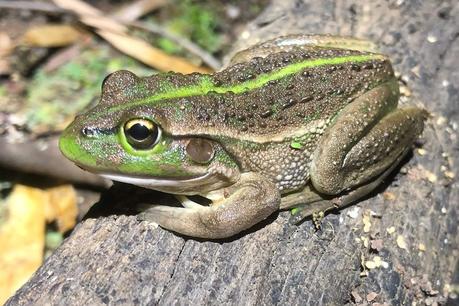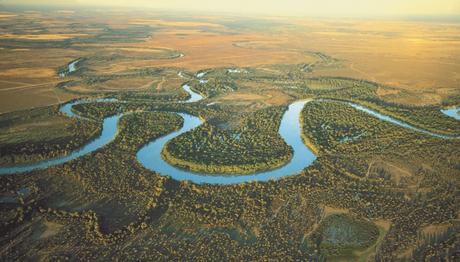Flooding in the Murray-Darling Basin is creating ideal breeding conditions for many native species that have evolved to take advantage of temporary flood conditions. Led by PhD candidate Rupert Mathwin, our team developed virtual models of the Murray River to reveal a crucial link between natural flooding and the extinction risk of endangered southern bell frogs (Litoria raniformis; also known as growling grass frogs).

Southern bell frogs are one of Australia’s 100 Priority Threatened Species. This endangered frog breeds during spring and summer when water levels increase in their wetlands. However, the natural flooding patterns in Australia’s largest river system have been negatively impacted by expansive river regulation that some years, sees up to 60% of river water extracted for human use.
Our latest paper describes how we built computer simulations of Murray-Darling Basin wetlands filled with simulated southern bell frogs. By changing the simulation from natural to regulated conditions, we showed that modern conditions dramatically increase the extinction risk of these beloved frogs.
The data clearly indicate that successive dry years raise the probability of local extinction, and these effects are strongest in smaller wetlands. Larger wetlands and those with more frequent inundation are less prone to these effects, although they are not immune to them entirely. The models present a warning — we have greatly modified the way the river behaves, and the modern river cannot support the long-term survival of southern bell frogs.’

Regulation has effectively locked these wetlands into a state of perpetual bust. Our research clearly shows that river regulation has been a driver of historical declines in frog numbers. These effects are further compounded by interactive stressors such as disease, exotic species, and land clearance.
A century of government water policies have reduced flows below the critical thresholds required for southern bell frogs to persist, but it has also created the means to save them. The Millennium Drought shifted environmental thinking in Australia and created policies that give the Murray-Darling Basin ownership of a portion of flow. Government scientists use these flows (sometimes called ‘environmental water’) to create positive ecological outcomes. This includes pumping water into dry wetlands to create breeding opportunities for southern bell frogs.
The flows that inform our model include the Millennium Drought that occurred from 1996 to 2009. During that time, south-eastern Australia experienced a region-wide reduction in rainfall and river flows, which coupled with ongoing water extraction, resulted in seven or more successive dry years in all South Australian wetlands.
Without environmental water, southern bell frogs would now be extinct in South Australia.
Because large-scale flooding can no longer occur with sufficient frequency, proper management is the only way forward. The few remaining frog populations that persist are at sites that are actively managed through regular inundation with environmental water applied at the right times for breeding. Our findings provide a blueprint for this process.
A single dry year is not a great risk to a healthy population, but managers should ensure that wetlands with southern bell frogs experience no more than two successive dry years to reduce the risk of local extinction. Unfortunately, without human intervention in this heavily modified system, southern bell frogs will probably go extinct.

